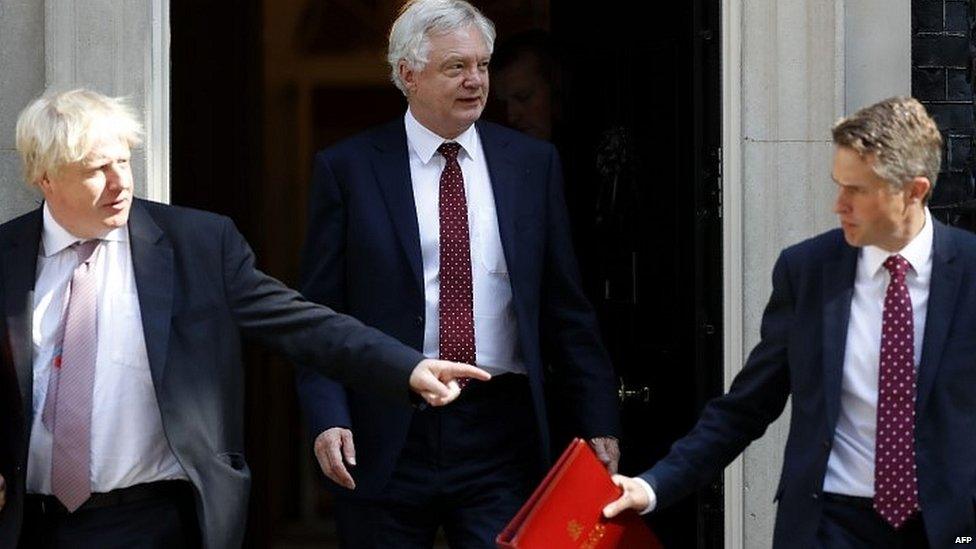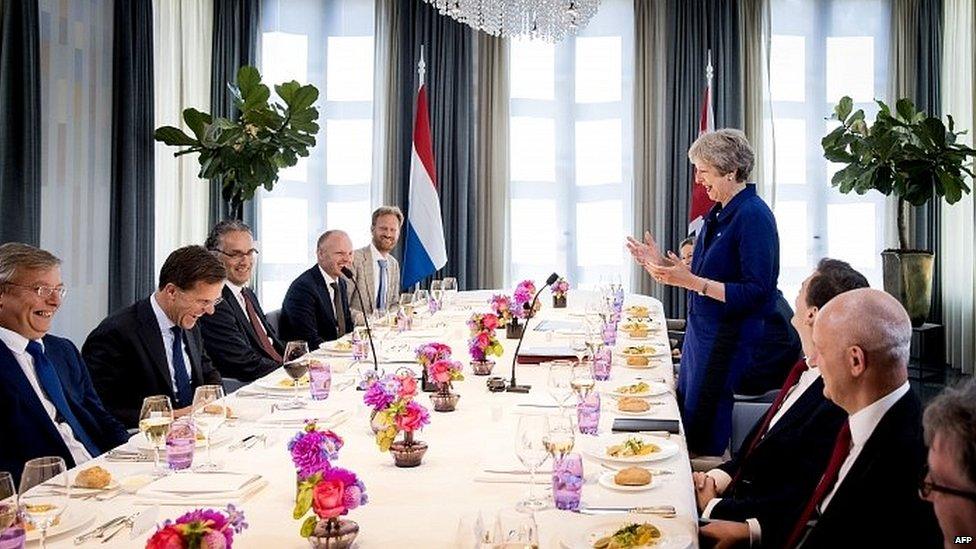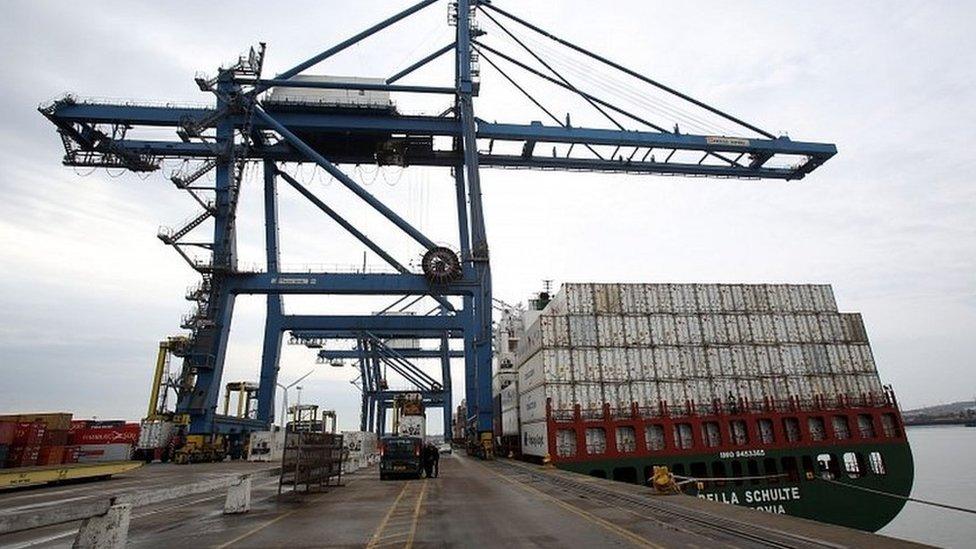Brexit: What we know about May's compromise trade plan
- Published

Theresa May has to square her cabinet colleagues behind the plan
So, finally, Theresa May has found a way. Not to get Brexit over the finishing line, obviously. But at least out of the starting block. Or so she hopes.
Not to unite the Cabinet. No-one could do that. But at least to herd most of them into line behind her. Or so she hopes.
And if one or two can't or won't get with the programme - there's the door.
The door, of course, being the door of Chequers, her country retreat, where she'll gather her Cabinet again on Friday and try - very hard, apparently - to get agreement on her plan for a negotiating position which might, just might, fly in Brussels.
How, though? Theresa May's "red-lines" always look and sound very red and very clear. They did again yesterday in the Commons when she pledged Britain to leave the EU, the customs union and the single market.
That, I'm now told by well placed sources, is still the plan. Sort of.
Only the so-called "third option" for Britain's future customs relationship with the EU looks much like an amalgam of the two which ran into a Cabinet road block - and on close examination more like the close "customs partnership", which Mrs May came to prefer, than any other.
Not that it's being sold to Brexiteers like that. And there is a lot in the new plan that might appeal, as it must, to the Brexiteer gallery.
So what's the big idea?
A single market trade deal on goods is the vital component. Business will probably like that, as far as it goes. Though, it won't be called a single market because that sounds too aligned to Brussels. Agri-food trade would be part of that deal too.
It has to be to avoid a hard border on the island of Ireland - which is vital if Brexit talks in Brussels are to get anywhere at all.
What then of services? And financial services? The Cabinet is split. Business Secretary Greg Clark's not alone in wanting a single market deal - or whatever it's called - to include services. But that's not, I gather, the plan. City firms saw this coming, and are saying again today they want in.

Will the UK be able to persuade other EU leaders to flex the rules of the single market?
But Theresa May's way is to make them wait during the Brexit transition while negotiations go on.
The City is undoubtedly concerned about the impact of Brexit, particularly the risk of a "hard Brexit" and negotiations ending in no deal at all. Mark Carney, the Governor of the Bank of England, expressed the same concerns last week.
But the fact is you don't need a single services market to avoid a hard Irish border. There is still time to negotiate the nature and degree of alignment between the UK and the EU.
Theresa May will stick to her red lines. Only they'll soon start to look a little blurred. No customs union, at least as it's defined now. No customs checks, or tariffs on goods either, but Britain would apply EU level tariffs, except where the UK can seek and sign trade deals beyond Europe (leave aside, for a moment, the view of much derided "experts" that outside trade deals will be low value or, in the case of America, say, tough on the UK and dependent on deregulation - and not just of chlorinated chicken).
Where UK tariffs are lower than the EU's there'd be refunds.
The European Court of Justice has been a huge sticking point. May's solution, I'm told, envisages some middle way; some some form of trade arbitration that ultimately, in some way, recognises, the court's authority.
And as for the big deep red line of freedom of movement of people. There's room for some concession here too, in the name of "labour mobility".
It's been thought that Home Secretary Sajid Javid is against preferential access for EU citizens. But I'm hearing he may be open to the idea if it's part of a decent trade deal.
So, will the Cabinet Brexiteers and sceptics buy it? That's the prime minister's big gamble. Some in government suspect she may duck a decisive confrontation even now.

But assuming she's up for it: Boris must decide whether to work with her, and fight his corner on the inside, or walk and pursue his private interests, somehow becoming Britain's next prime minister conceivably somewhere on the list.
Brexit Secretary David Davis? Hard to know. But he sees his job as a contribution to history and won't, surely, want to give it up if he can avoid it.
His hopes of becoming PM may, like Boris Johnson's, have taken a knock. But then the list of Tories who want to be prime minister is now almost as long as the list of those who don't.
The Tory MPs' shop steward, the Chairman of the Tory 1922 Committee of MPs, Sir Graham Brady has been appealing for order and loyalty in the weekend papers, and recently in a BBC interview.
That's the sort of thing chairmen - and chairwomen if there ever is one - of the "22" are meant to say. But remember Graham Brady is also a passionate Brexiteer. He was being helpful to Mrs May.
There's a plan then. There are still lots of blanks to wrangle over at Chequers before it can be slotted into the gaps in the coming policy Brexit White Paper, and that won't be settled quickly or easily. It's a test of the prime minister's nerve, and the willingness of her Cabinet colleagues to cause trouble.
Brussels won't like much or any of it very much. They will likely fear leaving a Britain-shaped hole in the borders of the EU single market. They won't like the "cherry picking" of the rules which govern single market or customs union membership - however you may choose to describe those arrangements.
Plans, even definitive plans, can change and often do. But at least there is a plan. And that's something. What could go wrong now? Apart from everything.